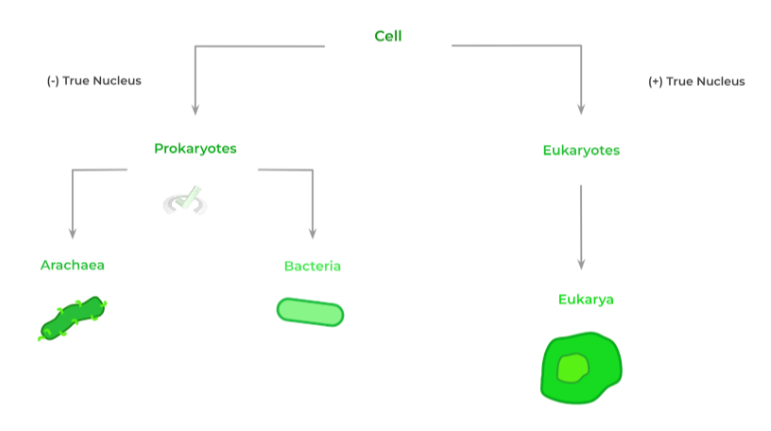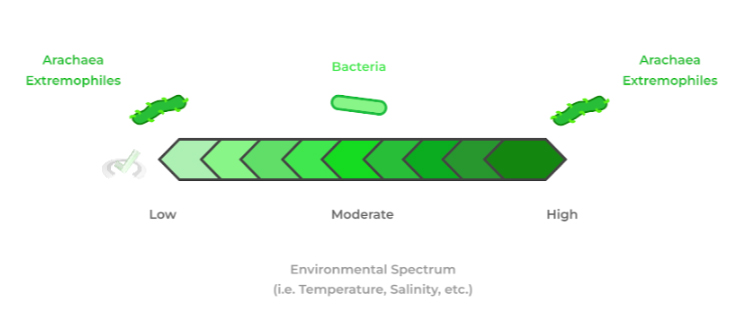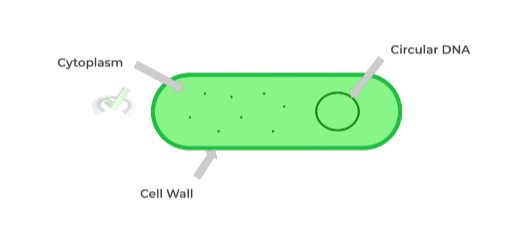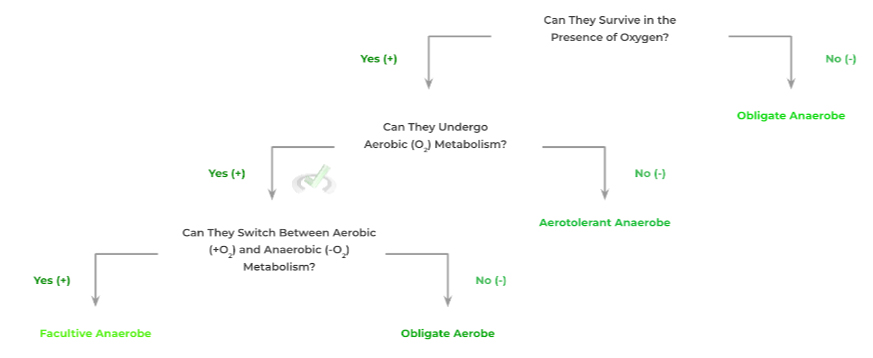I. What is Prokaryotic Cell Theory and Classification?
As you probably were able to pick up by the name of the article, we’re getting cellular! It was only 400 years ago that Robert Hooke looked through specially oriented pieces of glass held together by some wood and became the first to witness this cellular world.
From that groundbreaking observation came whole new fields of biology and medicine where we’re now able to study how our body physiology works and pinpoint what is the actual etiologies of disease while also developing medicinal therapeutics.
With this being a fairly high yield topic for the MCAT, we’ll cover and outline all the basic principles for the foundations of prokaryotic cells. This article is a great way to get a macroscale view of prokaryotes before getting into a more detailed view.
II. Fundamentals of Cellular Study
As mentioned above, before getting into the detailed structures of prokaryotic (and eukaryotic) cells, let’s first explore a macroscale perspective covering cell theory and major cellular classifications!
A. History, Development, and Impact of Cell Theory
After the discovery of cells through Robert Hooke’s work, cell theory was developed which originally reset on 3 main tenets. Advances in cell and molecular biology led to the including of 1 more tenet:
- Cells are the basic structural units of life.
- All living organisms are composed of cells.
- Cells can only arise from pre-existing cells and do so independently.
- DNA is used to transmit the necessary genetic codes which contain the information needed for cell growth and survival.
The development of cell theory not only impacted the way we studied life, but also gave way to the development of therapeutics now understanding the cellular etiology of diseases!
B. Major Cellular Classification
Cell categorization can also be a helpful tool to group different cells based on general similarities. 3 ways to classify cells include cell domains, aerobic v.s. anaerobic metabolism, and shape.
I. Prokaryotic and Eukaryotic Cell Domains
This is the more formal way of categorizing as it deals with the actual evolutionary lineage of cells! Before categorizing them into cellular domains, cells can be first broadly classified into either prokaryotes or eukaryotes.
We’ll cover their differences in more detail in another article. For now just know that prokaryotes DO NOT have a true nucleus while eukaryotes DO!
In addition, prokaryotes lack membrane bound organelles while eukaryotes possess them!

There are 3 main domains that cells are categorized in: archaea, bacteria, and eukarya. We’ll focus on the former 2 as eukaryotes will get its own special section!
Many archaea species are extremophiles as they’re able to live in extreme environments be it temperature, salinity, etc.
This is often due to their ability to generate energy from unconventional sources such as inorganic chemical compounds, termed chemosynthesis.
Bacteria is what most commonly comes to mind when talking about prokaryotes! We’ll cover more about them in another article, but for now know that they are composed of cytoplasm and a main circular DNA chromosome enclosed by a cell wall!

II. Existence of Aerobic and Anaerobic Variants
Prokaryotes can also be classified through the effect O2has on their survival, which include obligate aerobes and anaerobes, aerotolerant anaerobes, and facultative anaerobes.
Try using the terms in front of them to help with your memory and understanding like “obligate” and “aerotolerant” as you’ll see!
Below is another figure in a flow chart format that might also be helpful to get a better view and understanding of these classifications!

III. Classification Based on Shape
Finally, shape can also be used to characterize prokaryotic cells. However, this mostly and will mainly apply to prokaryotes in the bacteria domain!
The 3 main terms are bacillus, spirilla, and cocci which describe the bacteria either being rod shaped, spirally shaped, or sphere shaped, respectively.
III. Bridge/Overlap
Given the 4 tenets of cell theory, there was at first much debate on whether to categorize viruses as living organisms. Let’s dive into the debate and its agreed upon conclusion!
I. Debate on Viruses
Though viruses are able to replicate to further infection, they solely rely on the infection of a cell in order to allow for their replication. In other words, they CANNOT replicate independently by themselves, violating the 3rd tenet!
In addition, several viruses also utilize RNA genomes as opposed to a DNA genome to pass on their genetic information, violating the 4th tenet!
As such, it’s generally agreed upon that viruses ARE NOT considered living organisms due to the violation of these 2 tenets.IV. Wrap Up/Key Terms
Let’s take this time to wrap up & concisely summarize what we covered above in the article!
A. History, Development, and Impact of Cell Theory
The development of cell theory came due to the pioneering work of Robert Hooke, leading to the 4 main tenets of cell theory:
- Cells are the basic structural units of life.
- All living organisms are composed of cells.
- Cells can only arise from pre-existing cells and do so independently.
- DNA is used to transmit the necessary genetic codes which contain the information needed for cell growth and survival.
From cell theory came not only a new way of studying biology, but also the development of medicinal therapeutics that came from this new understanding!
B. Major Cellular Classification
Cells can be classified in many different ways including the following: cell domains, aerobic v.s. anaerobic metabolism, and shape.
I. Prokaryotic and Eukaryotic Cell Domains
Before classifying them into taxonomic cellular domains, cells can be first broadly classified into prokaryotes or eukaryotes, where the former lacks a true nucleus and membrane bound organelles while the latter possesses them.
The cellular domains archaea and bacteria contain only prokaryotes while eukarya contains only eukaryotes!
Most archaea species are extremophiles being able to live in extreme environments. Bacteria have their cytoplasm and circular DNA enclosed by a cell wall.
II. Existence of Aerobic and Anaerobic Variants
Prokaryotes can also be classified through the effect O2 has on their survival, which include obligate aerobes and anaerobes, aerotolerant anaerobes, and facultative anaerobes.
Refer to the figures in the article for a brief review but also try to use the terms to your advantage when learning and memorizing them!
III. Classification Based on Shape
This classification is most reserved for bacteria and 3 main terms to describe bacterial shape: bacillus, spirilla, and cocci which describe the bacteria either being rod shaped, spirally shaped, or sphere shaped, respectively.
V. Practice
Take a look at these practice questions to see and solidify your understanding!
Sample Practice Question 1
A rod shaped bacteria is found that when introduced to oxygen deprivation, it does not die. Which of the following could describe the bacteria?
I. Cocci, Obligate Aerobe
II. Bacillus, Facultative Anaerobe
III. Spirilla, Aerotolerant Anaerobe
IV. Bacillus, Obligate Anaerobe
A. II only
B. III only
C. I and IV
D. II and IV
Ans. D
Bacillus is the term used to describe any bacteria that is rod shaped. Both facultative and aerotolerant anaerobes can be used to describe the bacteria because both of these bacteria can survive without the presence of oxygen.
Note that their ability to undergo anaerobic metabolism is not important as it’s not noted in the question stem. The only concern is whether the bacteria can survive.
Sample Practice Question 2
In a tissue sample, researchers increase the oxygen partial pressure within the sample in order to kill off any harmful bacteria. Which of the following would be killed as a result of the treatment?
A. Obligate Aerobes
B. Obligate Anaerobes
C. Facultative Anaerobes
D. Aerotolerant Anaerobes
Ans. B
Obligate anaerobes will most likely be killed because they cannot survive in the presence of oxygen, hence their name. However, all the others can survive oxygenated environments as they’re tolerant or have the ability to undergo aerobic metabolism.



 To help you achieve your goal MCAT score, we take turns hosting these
To help you achieve your goal MCAT score, we take turns hosting these 
























